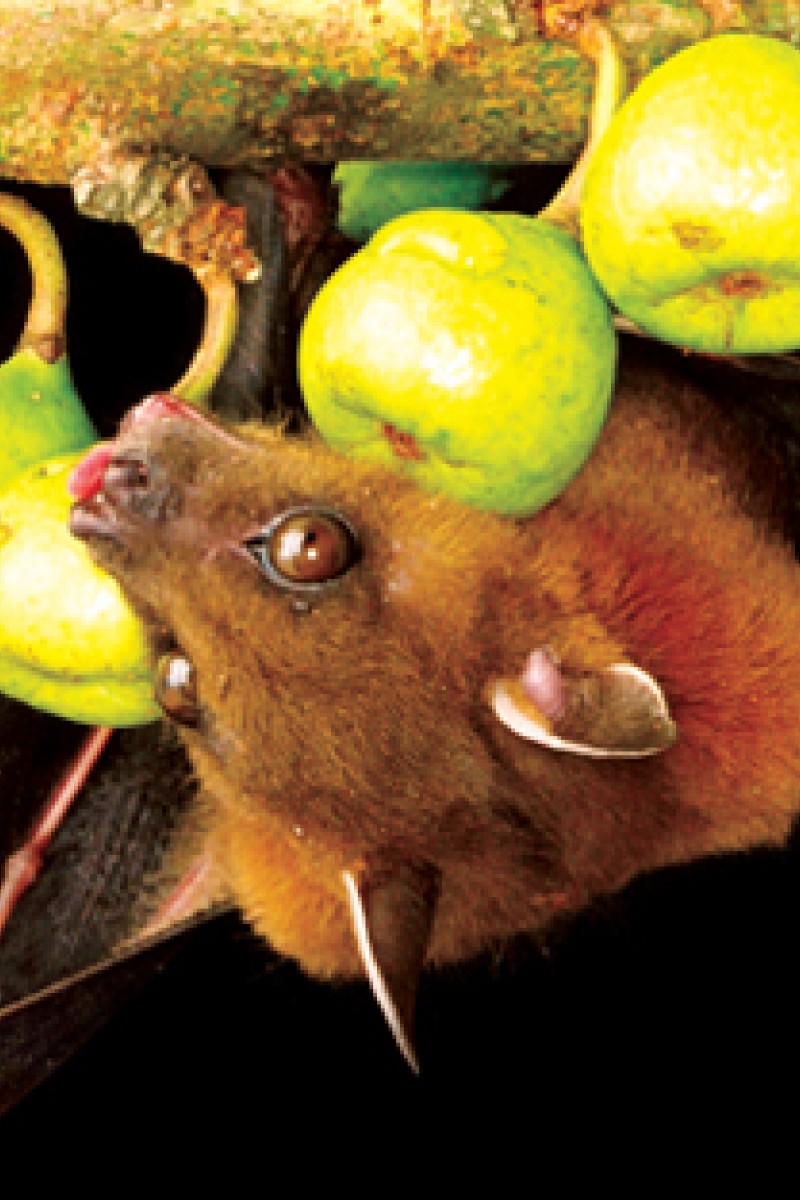 Short-nosed fruit bat, commonly found in the city's urban areas
Short-nosed fruit bat, commonly found in the city's urban areasMovies and myths are largely to blame for this misconception. Vampire bats exist, but they feed mainly on the blood of birds and large mammals. And they account for just three species of bat found in Central and South America.
Even in a concrete jungle like Hong Kong these intelligent yet increasingly vulnerable flying mammals are everywhere - if you know where to look.
The city is home to 26 species and some 20,000 to 30,000 bats.
They build their roosts all over the city, in everything from abandoned temples, old trees, dark caves, tunnels and eaves to man-made structures in places like Sai Kung, Lin Ma Hang, Lantau Island and the Mai Po wetland reserve.
"They can even be seen in urban parks like Kowloon or Victoria," says Shek Chung-tong, a bat specialist with the Agriculture, Fisheries and Conservation Department's mammal working group.
"There are six or seven short-nosed fruit bats living atop a Chinese fan palm in one of these parks. I've seen Filipino women dancing under it, completely unaware they've got company."
Bats make up 50 per cent of all local mammal species in the city. But the breeding rate over their 30-year lifespan is low, according to Kadoorie Farm's Focus on Hong Kong Bats: Their Conservation and the Law. A female bat gives birth to one pup a year, which feeds on milk.
The most common species - like the Chinese horseshoe bat and the Horsfield's bat - are excellent navigators and feed on insects. They use ultrasonic echolocation to look for prey. That means they emit calls at a frequency above human hearing then listen for their echoes. Species of fruit bat, including short-nosed fruit bats, use their excellent memory, eyesight and sense of smell to find fruit and nectar.
It is illegal to hunt or trade bats under the Wild Animals Protection Ordinance (Chapter 170). But loss of primary forests and human encroachment is increasingly threatening their habitats.
Construction projects near tunnels can be disruptive. "Bright lights and noise in the dark tunnels where bats make their homes can cause them to lose their grip as they hang upside down," says Alexander Yan Wing-lok, executive director of the Hong Kong Ecotourism Society.
Bats have an important role to play in the city. Some disperse pollen or seeds; others are predators that keep insect populations under control.
"A single bat can catch hundreds of insects in an hour," says Josephine Cheng Chui-yu, Hong Kong Wetland Park manager. "Large colonies of bats catch tonnes of insects in a single evening, including beetles and moths that are agricultural pests."
They are also valuable for indicating environmental changes because of their mobility, longevity, unique feeding behaviour and habitat requirements.
While some tourist agencies offer tours of caves to see bats, this threatens their survival. "Bats are timid creatures - they're very sensitive to light and noise," Shek says. "Their energy is easily depleted if you wake them often, especially when they're hibernating or when food is limited.
"There are other ways to see bats, like watching them in flight."
So next time you're on Park Lane in Tsim Sha Tsui after dark, look up - if you see something flying, it's likely to be a bat.
Still hungry for more? The Wetland Park offers public lectures on Saturdays until mid-June. Answer questions in the lecture correctly for the chance to go on a field visit to the Mai Po wetland reserve and Kadoorie Farm & Botanic Garden. Visit www.wetlandpark.com for details.
